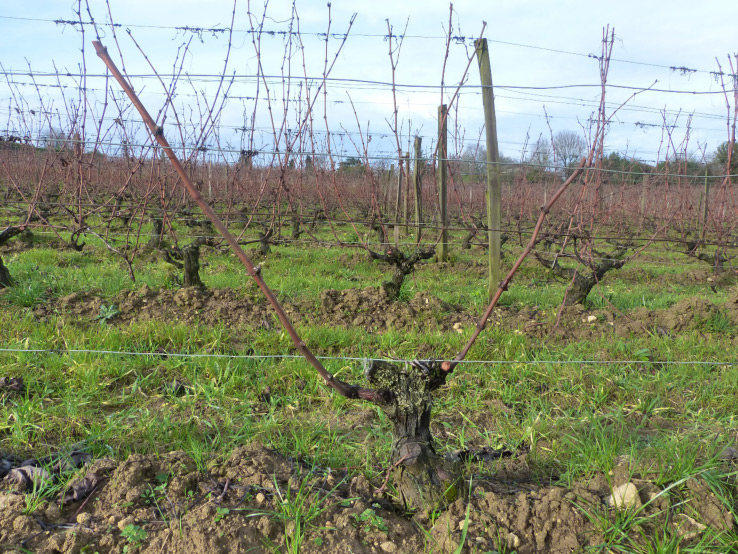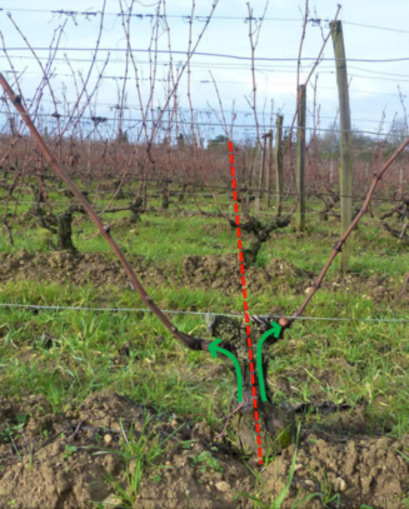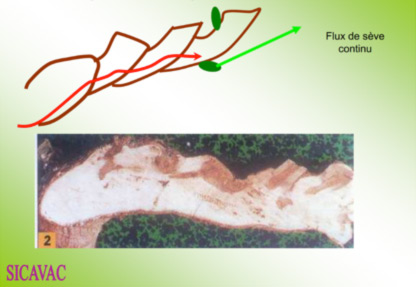Increase the vine’s durability
As part of our consultancy services, guidance for vine pruning covering theoretical aspects as well as practical work in the vineyard is fundamental and requires a great deal of energy.
Double Guyot pruning
To avoid vine stocks aging prematurely, production of dead wood must be restricted. Dead wood often represents far too large a proportion of a vine, limiting sap circulation and serving as a base for a multitude of saprophyte fungi which can release toxins which are deadly for the vine (this is the case of the vine diseases Esca and black dead arm).
To do this, balance between vine stocks must be carefully ensured; mutilating wounds should be avoided by taking into account dessication cones; sap flows established should be preserved.
Maintain the vine stock’s balance
Circulation of sap occurs mostly in the first few millimetres in the trunk’s rim. It is necessary to make sure that it circulates all around the vine stock.
Removal of one side leads to the death of this part right down to the trunk. This produces dead wood and restricts by at least half the capacity of exchange between the roots and leaves.
Avoid mutilating wounds
Dessication cones must be taken into account so that these do not penetrate the vine stock.
To ensure this, avoid clear-cut, penetrating pruning cuts and on woods of more than one year old, between the main structure and the cut, leave stumps of a distance equivalent to the diameter of the wood pruned.
Once dry, this stump can be removed.
[espro-slider id=1006]
Development of mutilating wounds over time; appearance of dead wood slowing down sap circulation, leading to a decrease in the vine stock’s vigour and production, and even death in the end.


